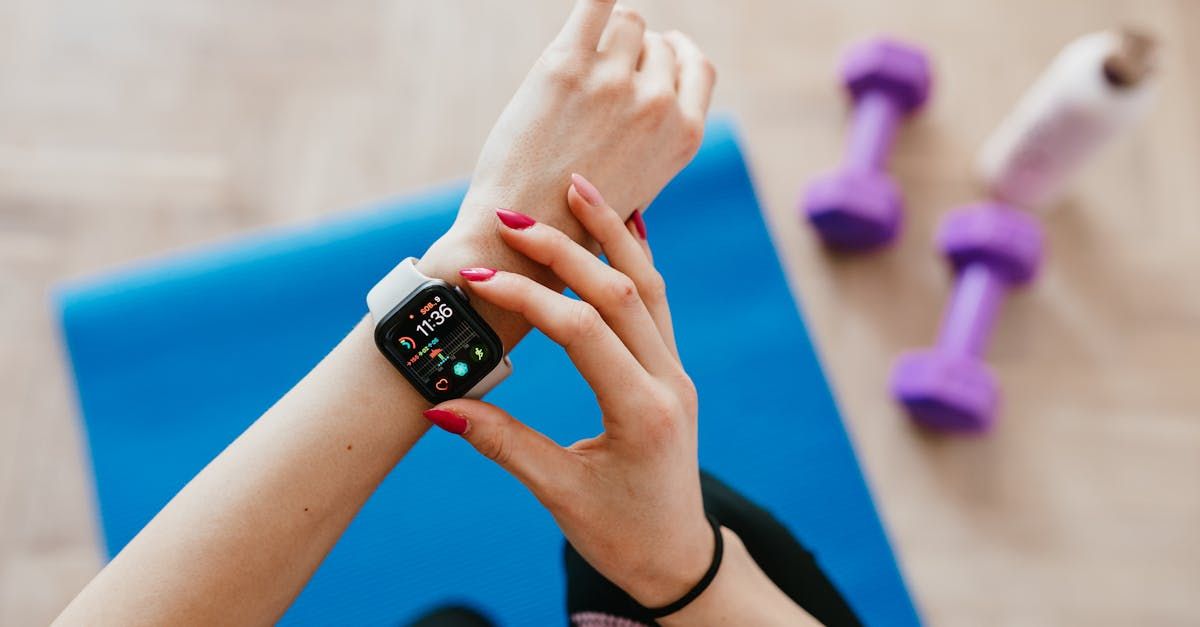Wearable Wellness - Knew Health
Empowering Your Health Journey
What is a Wearable?
You've likely noticed those sleek devices on wrists everywhere, or maybe you're already wearing one yourself. These amazing tools belong to a rapidly expanding category called "wearables" – and they're revolutionizing how we approach wellness. A wearable device is worn on your body and continuously tracks valuable health and fitness data. These smart companions often monitor heart rate, activity levels, sleep quality, and sometimes even advanced metrics like blood pressure or oxygen saturation. They're designed to support and enhance your wellness goals by providing real-time insights and personalized feedback that empowers you to make informed health decisions.
Wearing a Device
Your choice of how to wear your wellness device often comes down to personal preference and lifestyle, though some options are designed for specific functions. Here are the most popular ways our Community Members incorporate wearables into their daily routines:
- Wrist (a sleek bracelet or comfortable cuff)
- Finger (a discreet ring)
- Upper arm band
- Around the neck pendant
- Clipped to your favorite workout clothes
Who Wears Them?
It's wonderful to see how different people embrace wearables for their unique wellness journeys. Many health-conscious individuals who already maintain active lifestyles find wearables invaluable. This Community typically follows consistent exercise routines and prioritizes their wellbeing. They set meaningful fitness goals and monitor their progress throughout their wellness activities. They explore their potential and optimize their health to its fullest. The deeper your understanding of your health through data and patterns, the more effectively you can take action to support it. Athletes, fitness enthusiasts, and wellness-focused individuals thrive with these tools.
Another inspiring group consists of individuals embarking on their own healthcare journey for personal reasons. A wearable helps establish your baseline, track meaningful progress, and maintain motivation. It serves as a gentle reminder and accountability partner for making healthier choices. Data can be shared with a trainer or a health coach. While the wearable itself won't automatically transform your health, it can inspire positive behavior changes that enhance wellness and vitality.
The third group uses wearables for medical monitoring. People managing health conditions often wear devices recommended by their healthcare providers. Doctors can better support their patients using biosensor technology found in many wearables. These devices collect valuable health data continuously. Biosensors can detect specific substances like glucose or cholesterol, or monitor vital signs such as heart rate, blood pressure, blood oxygen, sleep patterns , or breathing rate.
Some individuals use wearables temporarily until sufficient data is collected. Others wear them long-term to help manage their conditions or as medication reminders.
Advancements in Wearables
It's truly remarkable how far wearables have evolved. In the early 2000s, ' wearable technology ' simply meant basic step counters. Today, the possibilities are extraordinary, especially for those passionate about health and wellness. Modern devices go far beyond simple tracking. Some can identify stress triggers and patterns. Others can actually help diagnose and support treatment plans. Healthcare providers and health coaches can monitor wellness around the clock without requiring frequent in-person visits. Because of these innovations, wearables are helping make healthcare more accessible and affordable for many individuals.
At Knew Health, our Community is dedicated to removing barriers and providing a proactive approach to healthcare. Supporting Members' access to health wearables exemplifies our commitment to true preventive care. With rising medical costs, these advancements are not only supporting better health outcomes but also helping families manage healthcare expenses more effectively.
Considerations with Wearables
While wearable technology offers incredible benefits, it's still evolving daily. As with any emerging technology, there are some considerations to keep in mind:
Technical Issues – Like all technology, wearables can occasionally experience glitches or malfunctions.
Investment – Advanced wearables can require significant upfront investment. Some also include app subscriptions for full functionality.
Comfort – Some users find certain devices uncomfortable or experience minor skin sensitivity with prolonged wear.
Sleep Comfort – Wearing devices overnight might take adjustment for some people to maintain quality rest.
Data Privacy – It's important to understand how companies use collected health data and ensure your privacy preferences are respected.
With their growing popularity and ongoing improvements, we can expect continued innovation that makes these tools even more valuable for supporting your wellness journey.
How to Get Yourself a Wearable
You've probably noticed wellness gadgets becoming part of everyday life. Now it's your opportunity to consider one—not just because they're popular, but because they can genuinely enhance your health journey. At Knew Health , we're passionate about supporting your wellbeing, especially through innovative tools like wearables.
As part of our monthly Membership, we provide preventive and wellness services that make it simple and affordable for you and your entire family to focus on health goals. These services include:
- Personalized health coaching sessions
- Annual wellness visits (with the provider of your choice)
- Telemedicine access
- Yearly Self-Care Credit (perfect for your wearable technology investment)
- Access to the FitOn digital platform
- Discounts on supplements and blood work
- And so much more
If you're curious to learn how Knew Health can align with your wellness goals and provide an alternative to traditional insurance that puts you in control, visit our website or schedule a call with our Care Team today. Remember, Knew Health is not health insurance – we're a Community of Members supporting each other through Medical Cost Sharing, where eligible Medical Needs are shared among our Community. Together, we're creating a more compassionate, transparent approach to healthcare that empowers you to make the best choices for your wellbeing.
Sources
Palatnik, Martin. "Wearable Technology in Healthcare: A Booming Market." Qubika , 23 Jan. 2024, qubika.com/blog/wearable-technology-in-healthcare/.
Sanchez, Eva. "Health Wearables." Western Oregon University , wou.edu/chemistry/chemistry-degree/student-activities-2/chemistry-corner/advancing-the-frontiers-of-medicine/health-wearables/.










